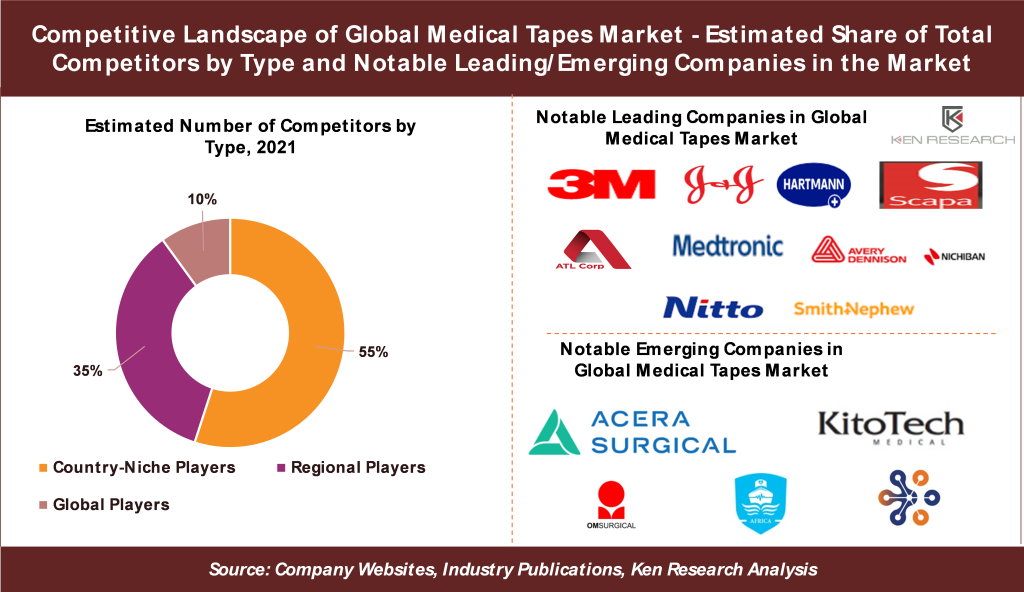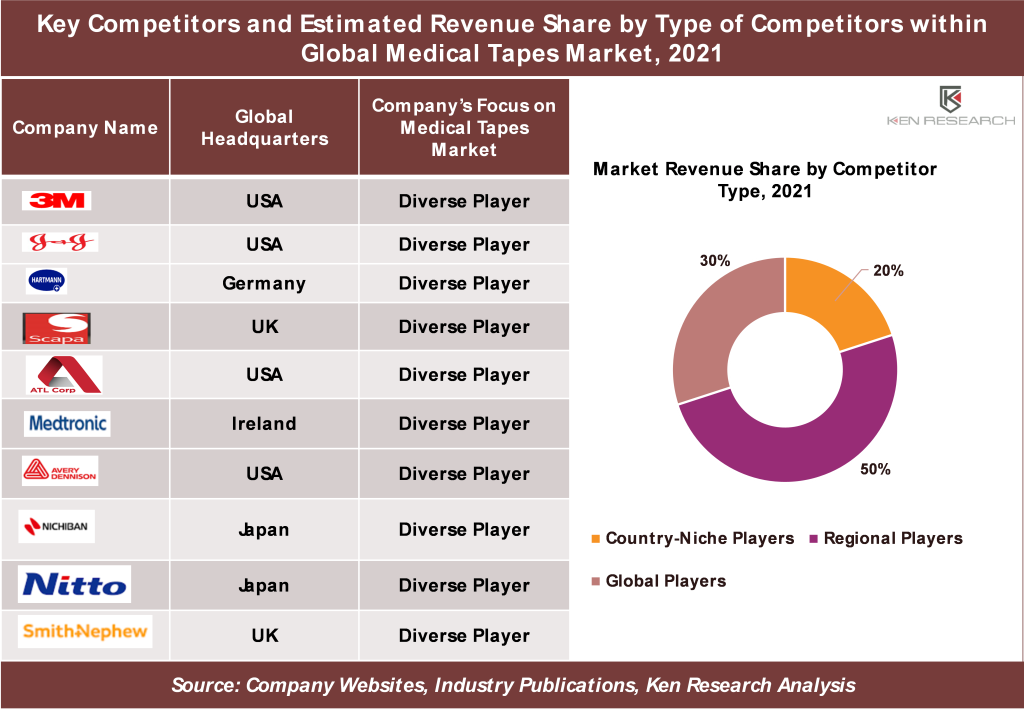Driven by the rising consumption of thermoformed plastics material in healthcare and packaging industries, Global Thermoformed Plastics Market is forecasted to Cross US$60 Bn by 2028 says Ken Research Study.
Thermoforming is a plastic manufacturing process that applies a vacuum or pressure force to stretch a sheet of heated thermoplastic material over an engineered mold to create a 3-dimensional shape or part. After forming, the shaped part is trimmed and finished to a specification to meet an end user’s requirements. The process and thermoplastic materials are extremely versatile and can be utilized to manufacture parts for a wide range of applications.
“Ken Research shares 3 key insights on this high-opportunity market from its latest research study”
1. Increasing Consumption of Thermoformed Plastics in the Packaging Industry provides an Opportunity for the Market Growth
According to Ken Research Analysis, the Global Thermoformed Plastics Market was valued at ~US$ 30 billion in 2017. It is estimated to be ~US$ 40 billion in 2022 and is forecasted to reach a market size of ~US$ 60 billion, growing at a CAGR of ~7% by 2028, due to increasing usage of thermoformed plastics in healthcare and packaging industries.
Thermoform packaging is known to be a high-quality packaging solution for any kind of food and healthcare product. Packaging of some kind of food products requires the incorporation of functional and innovative design while providing good moisture barriers, physical stress, temperature, contamination protection, and tamper resistance. The thermoforming process enhances the properties of plastic materials and makes it suitable to be recycled again. Thermoform packaging not only protects the products but also extend the shelf-life, owing to its durability resilience nature.
The players in the food industry are increasingly looking for packaging solutions that enable them to reduce the carbon footprint. As thermoformed packaging are increasingly being manufactured using 100% recyclable products, the demand is expected to grow during the forecast period. The rising trend for the development of sustainable packaging is expected to propel the players in the market to come up with product developments that enable them to meet the increasing demand.
- In October 2019, Charpak Ltd., a manufacturer of thermoformed packaging products, designed and launched a new thermoformed packaging tub that is 100% recyclable, tamper-evident, that can be used for ambient, chilled or frozen sectors, food, and non-food products.
- According to SouthPack, a custom manufacturer of packaging, stated that thermoformed packaging cost up to 15% less than packaging made from plastic injection molding.
 Request For Sample Report @https://www.kenresearch.com/sample-report.php?Frmdetails=NTk2MDU2
Request For Sample Report @https://www.kenresearch.com/sample-report.php?Frmdetails=NTk2MDU2
2. Surging Demand for Thermoformed Plastics in Healthcare Industry is Fuelling the Market Globally
The consumption of plastic packaging in the healthcare industry is expected to rise due to government funding for healthcare and pharmaceutical centers. Increasing drug production and government initiatives toward the development of healthcare and pharmaceutical sectors generate significant growth opportunities for the thermoform plastic healthcare packaging market in the coming years.
For instance, In December 2021, the Guangzhou Sino-Israel Bio-industry Investment Fund (GIBF) announced fund of US$ 300 million for joint drug development ventures. The drug development process includes the equipment and procedures that requires the use of thermoformed plastics.
Furthermore, plastic healthcare packaging formats are preferred by consumers, as these not fragile and are easy to handle compared to alternative packaging solutions available in the market. Manufacturers prefer plastic packaging for healthcare owing to anti-microbial properties and reduced risk of breakage.
Moreover, the increasing demand for surgical masks during the pandemic has created a golden opportunity for the plastic packaging industry.
According to United Nations International Children's Emergency Fund (UNICEF), in 2020, about 301.3 million surgical masks and 22.2 million N95 ventilator kits were distributed in 127 countries. The steady increase in manufacturing, production, and distribution activities required use of thermoformed plastics, which helped in the growth of the market.
 3. Volatile Raw Material Prices for Thermoformed Plastics is the Major Challenge Faced by The Thermoformed Plastics Market
3. Volatile Raw Material Prices for Thermoformed Plastics is the Major Challenge Faced by The Thermoformed Plastics Market
Crude petroleum is an important raw material used in the production of organic chemicals, which are in turn used as inputs into the production of more-processed goods, such as plastics products. Major Asian petrochemical manufacturers are under immense pressure as geopolitical turmoil in the Middle East is severely affecting the supply of crude oil.
In April 2019, the attacks on Saudi Aramco’s oil processing facilities at Abqaiq and Khurais on resulted in an immediate price spike of 10% to 12%. The plastic industry faces the effects of the continuous rise and dips in the prices of crude oil.
The most basic ingredients for the manufacturing of plastic, such as ethylene and propylene, are obtained from crude oils. The monomers are then converted into polymers such as polyethylene, polypropylene, and other materials. The supply-demand shifts cause price volatility in plastics globally. As a result, changes in crude oil prices significantly impact the cost of thermoformed polymers.
 Request For Sample Report @https://www.kenresearch.com/sample-report.php?Frmdetails=NTk2MDU2
Request For Sample Report @https://www.kenresearch.com/sample-report.php?Frmdetails=NTk2MDU2
Key Topics Covered in the Report
- Snapshot of Global Thermoformed Plastics Market
- Industry Value Chain and Ecosystem Analysis
- Market size and Segmentation of the Global Thermoformed Plastics Market
- Historic Growth of Overall Global Thermoformed Plastics Market and Segments
- Competition Scenario of the Market and Key Developments of Competitors
- Porter’s 5 Forces Analysis of Global Thermoformed Plastics Industry
- Overview, Product Offerings, Strengths, & Weaknesses of Key Competitors
- Covid-19 Impact on the Overall Global Thermoformed Plastics Market
- Future Market Forecast and Growth Rates of the Total Global Thermoformed Plastics Market and Segments
- Market Size of Application / End User Segments with Historical CAGR and Future Forecasts
- Analysis of Global Thermoformed Plastics Market
- Major Production/Supply and Consumption/Demand Hubs within Each Region
- Major Country-wise Historic and Future Market Growth Rates of the Total Market and Segments
- Overview of Notable Emerging Competitor Companies within Each Region
Notable Emerging Companies Mentioned in the Report
- Vaquform
- Janco, Inc
- Penz Products, Inc.,
- Hagans Plastics Co., Inc.
- Engineered Plastic Products, Inc.
- Woodstock Plastics Co., Inc.
Key Target Audience – Organizations and Entities Who Can Benefit by Subscribing This Report
- Thermoformed Plastics Market
- Thermoformed Plastics Manufacturers
- Thermoformed Plastics Suppliers
- Polymethyl Methacrylate (PMMA) Thermoformed Plastics Suppliers
- Bio-degradable polymers Thermoformed Plastics Suppliers
- Polyethylene (PE) Thermoformed Plastics Suppliers
- Acrylonitrile Butadiene Styrene (ABS) Thermoformed Plastics Suppliers
- Poly Vinyl Chloride (PVC) Thermoformed Plastics Suppliers
- High Impact Polystyrene (HIPS) Thermoformed Plastics Suppliers
- Polystyrene (PS) Thermoformed Plastics Suppliers
- Polypropylene (PP) Thermoformed Plastics Suppliers
- Thermoformed Plastics Distributors
- Emerging and Startup Thermoformed Plastics Companies in the Market
- Different Types of Thermoformed Plastics Institutes
- Government Departments of Polymers
- Ministries and Departments of Agriculture
- Ministries and Departments of Packaging
- Ministries and Departments of Healthcare
- Importers and Distributors of Thermoformed Plastics
- Environmental Regulatory Authorities
Period Captured in the Report
- Historical Period: 2017-2021
- Forecast Period: 2022-2028F
For More Information on the Research Report, refer to below links: –
Global Thermoformed Plastics Market: Ken Research
Follow Us
LinkedIn | Instagram | Facebook | Twitter | YouTube
Contact Us: –
Ken Research
+91-9015378249




















